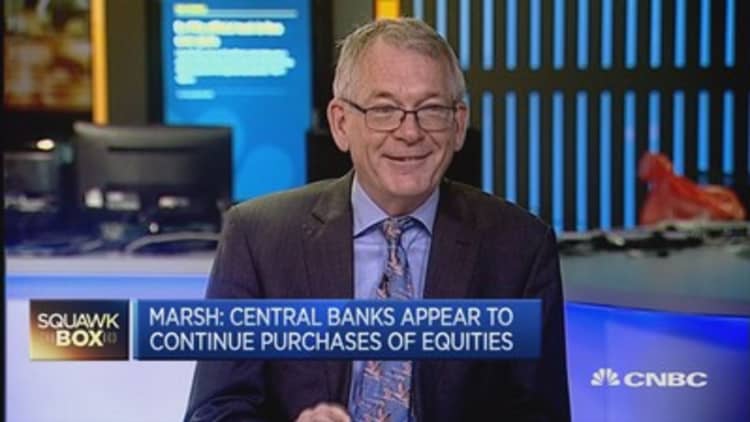
Heavy selling in government bonds hit full swing early on Thursday, as yields rose with a speed and ferocity that was once considered rare for a safe-haven market.
The yield on the benchmark 10-year German Bund and U.S. Treasury rose to its highest levels for the year in early trade, while in Asia the 10-year Japanese government bond (JGB) yield hit a six-month high. Yields move inversely to prices.
Later in the day, bonds pared losses, with yields on 10-year Treasurys down to 2.311 percent from a peak of 2.425 percent.
"We are watching this sell-off very closely," Francois Savary, head of asset services at investment firm REYL & CIE, told CNBC Europe's "Squawk Box."
"The fact that we have had a change of course in inflation, when people were talking about deflation, deflation, deflation at the end of 2014 and the first quarter of 2015, is the main reason why we were fearful," he said.
The culprit
The latest selloff in bond markets, which began in late April, gathered paced on Wednesday after European Central Bank President Mario Draghi warned that asset prices tended to be more volatile against a backdrop of low interest rates. Policymakers would look beyond the sharp rise in yields, he added.
Read MoreECB's Draghi quashes any talk of an early taper
The yield on the benchmark 10-year Bund had soared more than 30 basis points in the past two days, climbing to about 0.991 percent on Thursday morning—that's over 90 basis points above a record low of 0.05 percent hit in mid-April. However, by afternoon trade in London it had pared gains and had fallen back to around 0.837 percent.
The 10-year JGB yield rose as high as 0.5 percent but both also eased lower as Thursday's session progressed.
The morning moves also sent European stock markets sharply lower.
"If you look at Bunds, and go back to April 20, 10-year Bunds were at 7 basis points and where are we now – we're pushing up to 1 percent. We've gone from 7 basis points to 70 basis points in 15 trading sessions—that's a huge sell-off in the fixed-income markets," Nick Nelson, head of global equity strategy at UBS, told CNBC.
"For equities, the speed of the selloff has been a problem, and over a medium term bond yields higher are a good thing – they reflect inflation coming back, but it is a worry for now," he added.
A rapid rise in bond yields can push up borrowing rates for businesses, hurting economic growth.
Frankenstein's monster?
Government bond yields started to rise in April as investors' perceptions about inflation started to change.
After stabilizing for a while, the selloff started again this week, with inflation data on Tuesday showing consumer prices in the euro zone rose a higher-than-expected 0.3 percent in May from a year earlier. In response, the ECB upped its inflation forecasts for this year on Wednesday.

Erkki Liikanen, a member of the ECB's governing council, was reported on Thursday as saying the ECB would continue with its asset-purchase program until inflation picked-up some more. He added that inflation expectations were getting stronger.
"I think most central bankers are worried about the forces they have unleashed – it's a kind of Frankenstein's monster this quantitative easing," David Marsh, managing director and co-founder of the Official Monetary and Financial Institutions Forum, told "Squawk Box." "It has changed the whole way of looking at assets across the world."


